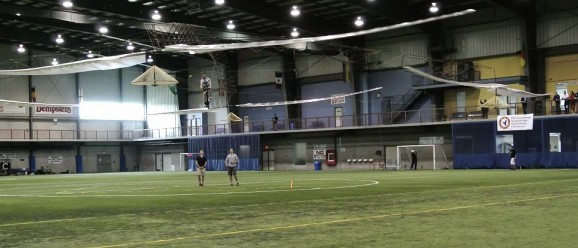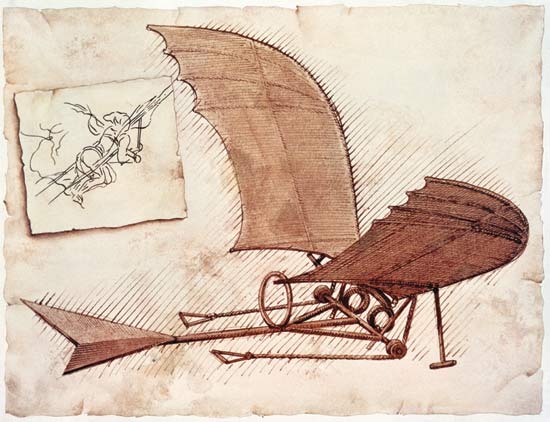Da Vinci Eat Your Heart Out: Canadian Duo Creates A Human-Powered Helicopter
This article is more than 2 years old
 Over 500 years ago, Leonardo da Vinci imagined a human-powered aircraft. Even after the Wright Brothers’ groundbreaking invention, people still desire to fly, even if it means rigging themselves and taking an ill-advised jump off a cliff. Hence, the Sikorsky Prize—a $250,000 award given by the American Helicopter Society to a team who builds a human-powered aircraft that can fly or hover at a height of 3 meters (just under 10 feet) for at least a minute. Since the prize’s inception in 1980, no one has won — until now.
Over 500 years ago, Leonardo da Vinci imagined a human-powered aircraft. Even after the Wright Brothers’ groundbreaking invention, people still desire to fly, even if it means rigging themselves and taking an ill-advised jump off a cliff. Hence, the Sikorsky Prize—a $250,000 award given by the American Helicopter Society to a team who builds a human-powered aircraft that can fly or hover at a height of 3 meters (just under 10 feet) for at least a minute. Since the prize’s inception in 1980, no one has won — until now.
A Canadian team won the prize in this year’s competition with a successful 64-second flight. The two-person team, comprised of Todd Reichert and Cameron Robertson, started working on their da Vinci-esque ornithopter back in 2006. Three years later, their 94-pound Snowbird plane with a 105-foot wingspan was ready to test. That model involved a foot-powered bar that flapped the craft’s wings as the user sat in the cockpit. Test flight after test flight failed, but the engineers learned more and more with every crash. In 2010, Snowbird stayed aloft for over 19 seconds and flew about 475 feet. That success, which the two believe to be a world record for this type of aircraft, gave them the confidence to begin the endeavor that eventually took home the first Sikorsky Prize.
 Reichert and Robertson built their human helicopter, called Atlas, in only three months, however, they conducted tests and suffered crash landings for the next nine. Finally, they achieved what da Vinci imagined so many centuries ago, flight. At the competition, Reichert pedaled a device that looks like a bicycle that powers four rotors. Atlas staid aloft for 64 seconds, and took home a quarter of a million dollars.
Reichert and Robertson built their human helicopter, called Atlas, in only three months, however, they conducted tests and suffered crash landings for the next nine. Finally, they achieved what da Vinci imagined so many centuries ago, flight. At the competition, Reichert pedaled a device that looks like a bicycle that powers four rotors. Atlas staid aloft for 64 seconds, and took home a quarter of a million dollars.
Reichert and Robertson now have their own company, AeroVelo, so they can devote more time and resources to human-powered vehicles. While these craft may not be the most practical or efficient means of travel, they “challenge people’s conventional way of thinking,” says Robertson. “We really want people to understand that impossible is nothing.” The two Canadians are committed to developing the fastest human-powered bicycle. In this year’s World Human-Powered Speed Challenge, their Bluenose recumbent bike with a carbon-fiber shell attained a speed of 77 mph. The world record, set by a team from the Netherlands, is 83.8 miles per hour, which the two engineers hope to top next year. The best thing about switching to a human-powered bike is that testing it doesn’t involve jumping off any cliffs.












